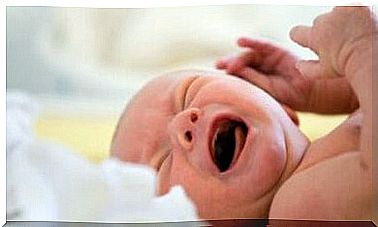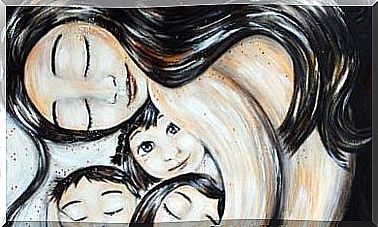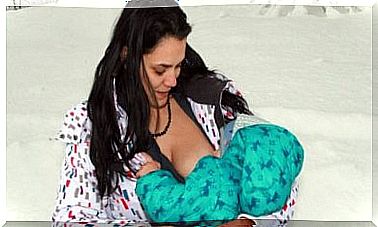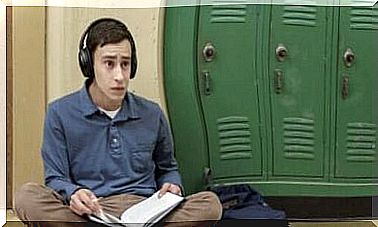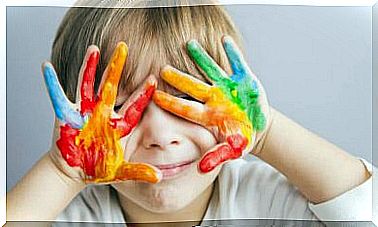Childhood Dyslexia: Symptoms, Causes And Treatment – I’m A Mom

There are children with learning disabilities who find it difficult to follow classes normally. Therefore, most perform poorly, which also affects their self-esteem. There are different types of disorders of this nature, but let’s focus on childhood dyslexia.
Dyslexia can appear at different times in a person’s growth, from childhood, through school, to adulthood. In the case of children, they find it difficult to learn to read and write, although they are intelligent and eager to learn.
Although there is no cure, this disorder can be detected early and, with a special program at school, children can have satisfactory school performance.
What is childhood dyslexia?
Childhood dyslexia is included among the learning disorders, 5% of children between 7 and 9 years old suffer from it. This disorder consists of a difficulty in reading and writing, which affects the child’s learning. It can be reflected in different ways, but often there are reversals when reading certain words, numbers or letters.

It is caused by problems identifying speech sounds and understanding how these sounds relate to letters and words (decoding). This disorder, also called “difficulty reading,” affects the areas of the brain responsible for language.
Children with this disorder have normal vision and intelligence, and therefore they can be successful in school with the help of a specialized educational program and tutor. Emotional support also plays a key role. Although childhood dyslexia is not curable, an early assessment is essential to be able to intervene as quickly as possible and have the best results.
Infant Dyslexia Symptoms
Dyslexia can manifest in many different ways and its intensity will depend on the child’s age. Some functions that can be affected are motor skills, vocabulary, memory, perception and speech.
Symptoms may be harder to detect in preschool-age children and easier to detect from school onwards. So, let’s look at some of the symptoms that occur most frequently.
Symptoms in Preschool Children
- Difficulty forming words correctly.
- Difficulty learning new words.
- Inversion of the sounds of words.
- Inverting letters with similar spelling.
- Confusion between similar words when pronounced.
- Difficulty saying the name or remembering letters, numbers and colors.
- Difficulty learning children’s songs, poetry or rhymes.
Symptoms in School Age Children
- Reading level lower than expected for the age.
- Difficulties in the pronunciation of unknown words.
- Spelling problems.
- Need more time to do activities that require reading or writing.
- Avoid activities related to reading.
- Difficulty understanding the similarities and differences between words and letters, sometimes even listening to them.
- Difficulty to process and understand what they hear.
- Problems remembering a sequence of things.
Symptoms in Adolescents and Adults
- Problems with spelling words.
- Difficulty reading mentally or out loud.
- Bad pronunciation of words or names.
- Difficulty remembering words.
- Problems of comprehension.
- Difficulty learning languages.
- Difficulty summarizing texts or stories.
- Very slow reading and writing.
- Difficulty solving math problems.
- Difficulty to memorize.
- Avoid reading-related tasks.

Faced with any of these symptoms, the ideal is to look for a professional so that a thorough assessment is made and receive guidance on the most appropriate treatment for each case.
Causes of childhood dyslexia
One of the factors that can be the cause of this disorder is hereditary. It has been found that there are genes that determine how the brain processes language and reading. For this reason, the existence of a family member with dyslexia may be one of the reasons for the appearance of this disorder.
Another possible cause of childhood dyslexia is premature birth or conditions around birth. Also enter the account the exposure to certain substances during pregnancy, such as:
- Cigarette (nicotine).
- Alcohol.
- Drugs.
- Severe infections of the mother during pregnancy (affecting the brain in the fetus).
Other possible causes of dyslexia are:
- Brain Injury.
- Visual perception problems.
- Bad connection between the cerebral hemispheres.
- Emotional problems.
- Low phonological awareness.
Treatment of childhood dyslexia
Regarding the treatment of this disorder, the first thing that must be taken into account is early detection, since reading and writing are essential for people’s development.
Treatment depends on the age at which the diagnosis occurs and consists mainly of personalized intervention in language, phonology and reading.
When dealing with this problem, we must also take into account other difficulties that arise from it, such as motor difficulties, self-esteem problems, attention problems, etc. In this sense, it is recommended that parents follow the following tips to deal with this problem:
- Contact the school to work together.
- Read stories aloud to the child.
- Promote frequent reading, but also lead by example. Read while the children are also reading.
- Seek professional help to treat this disorder early.
In short, it is possible to say that childhood dyslexia is a disorder that must be treated early so that it does not become a problem in other areas of the child’s life. In this way, if help is requested in time, the effects and difficulties it represents can be controlled.
So, as a parent, try to put into practice the tips we’ve given in this article and, above all, ask for professional help to receive guidance and so that the problem is dealt with as soon as possible.

